Daphne (Syria)
by
Abraham Ortelius
Stunning paradise of Daphne
Detail
Date of first edition: 1595
Date of this map: 1603
Dimensions (not including margins): 36,9 x 49,3 cm
Dimensions (including margins): 45,5 x 55,5 cm
Condition: Very good. Strong paper and wide margins. Centre fold as published, with vertical folds next to it.
Condition rating: A
Verso: text in Latin
Map reference: Van den Broecke 232; van der Krogt 31
From: Theatrum Orbis Terrarum Abrahami Ortelii Antverp. Antwerpen, J.B.Vrients, 1609. Van der Krogt 31:053
Price (without VAT, possibly to be added): €900,00 (FYI +/- $999,00 / £801,00)
Unless otherwise specifically stated on this map page, we charge the following expedition costs in euro (unfortunatelly, gone up with Covid, but still too low in reality!):
– Benelux: 40 euro
– Rest of Europe: 60 euro
– Rest of the World: 100 euro
In stock
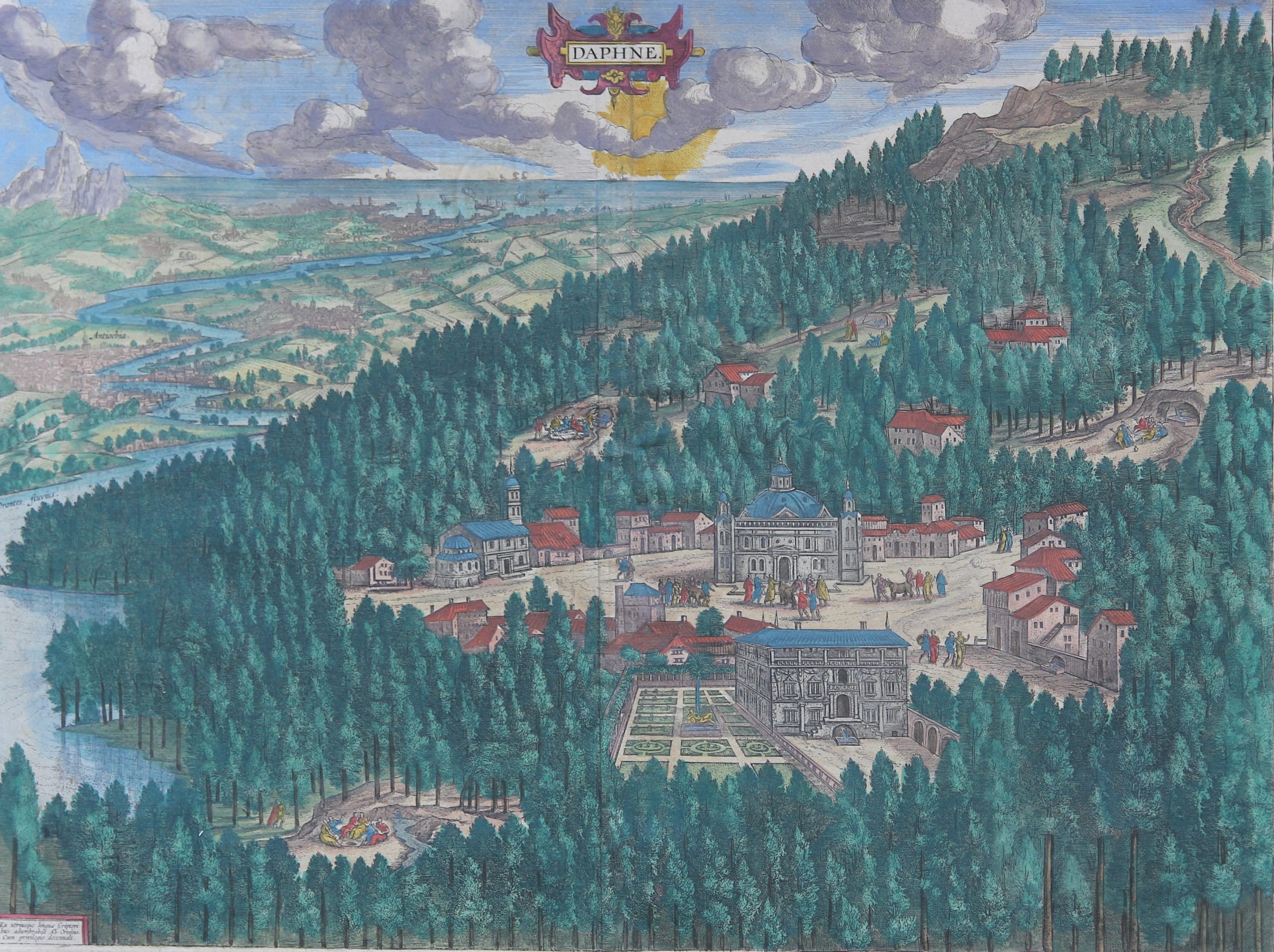
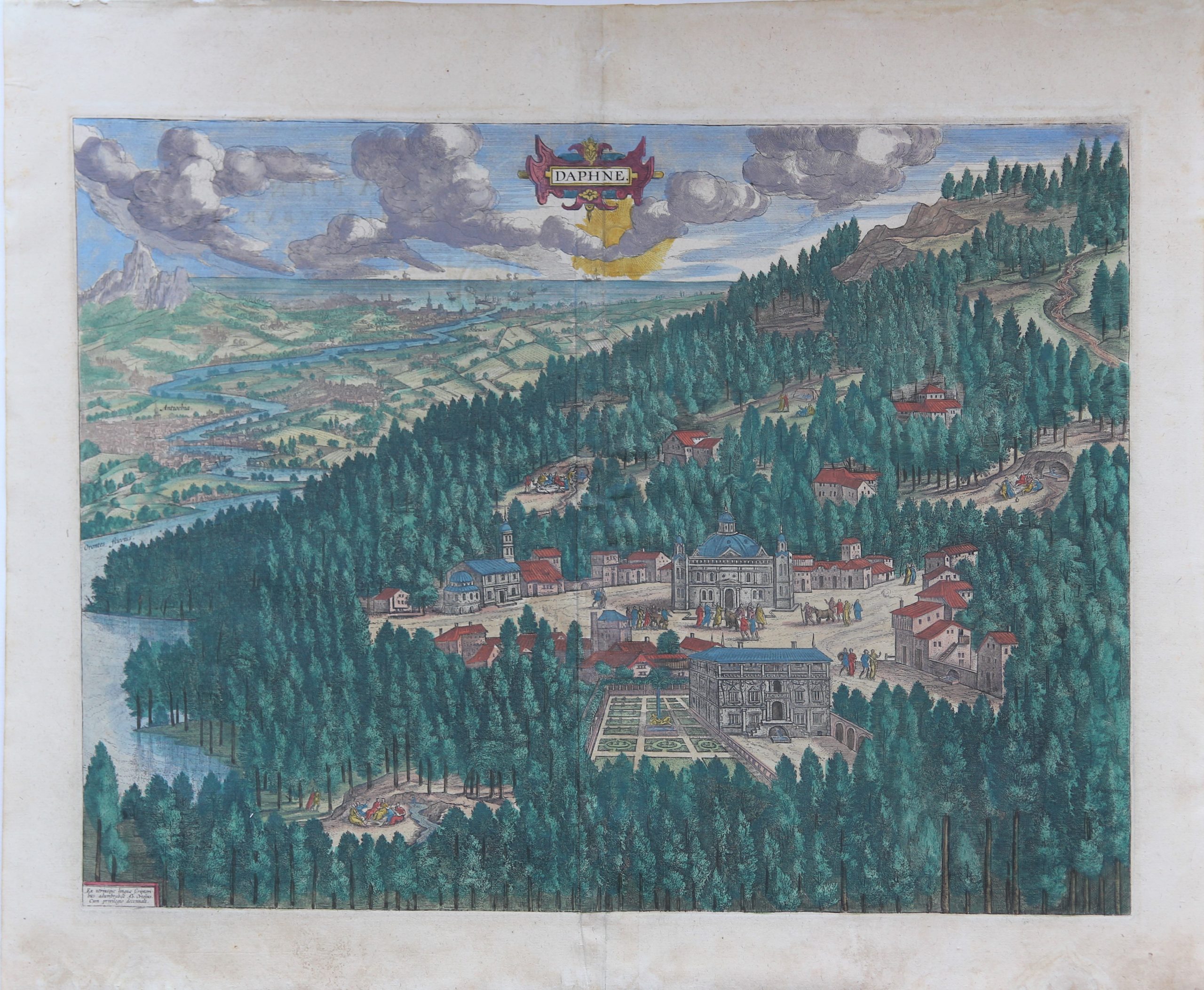
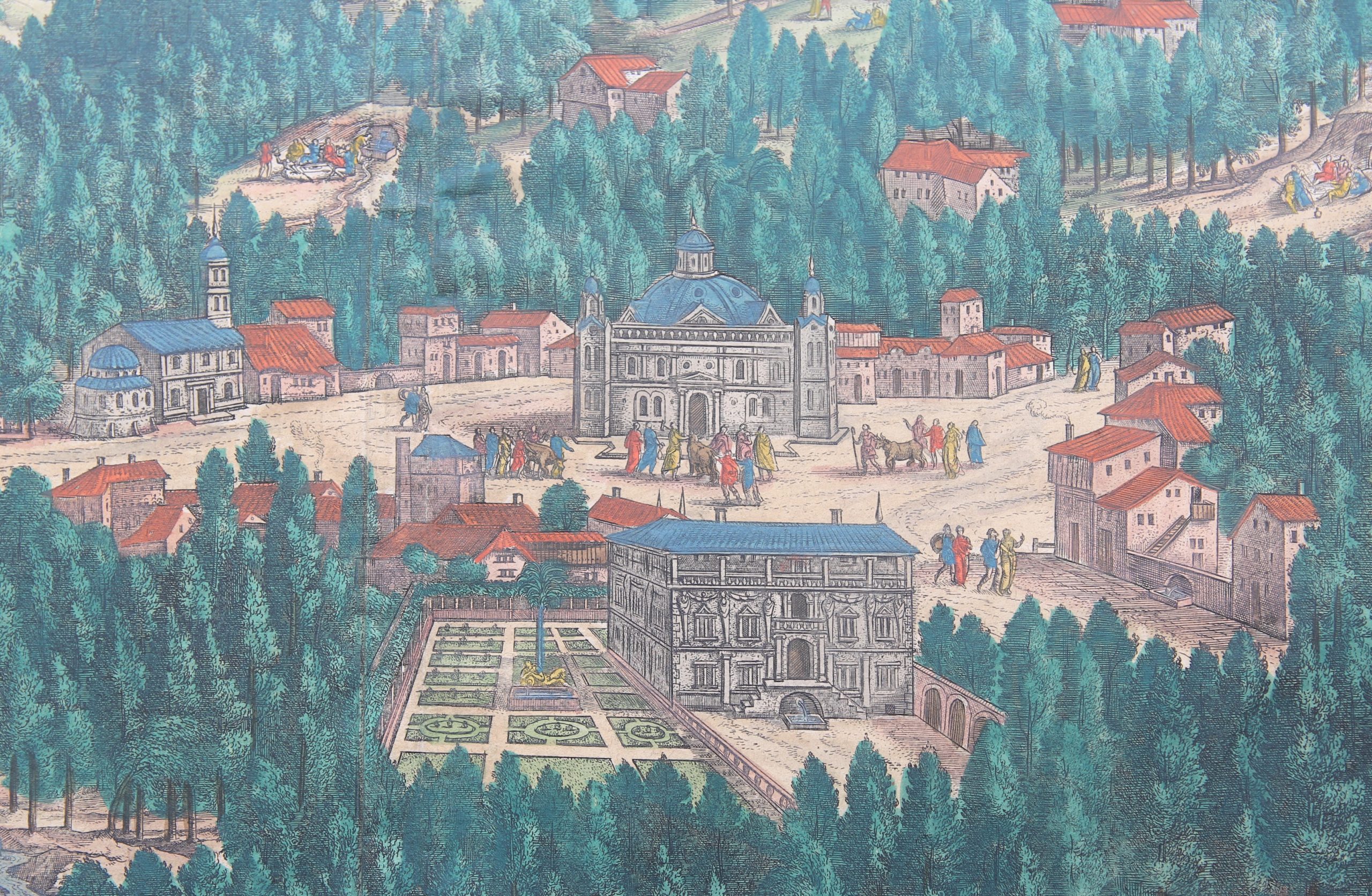
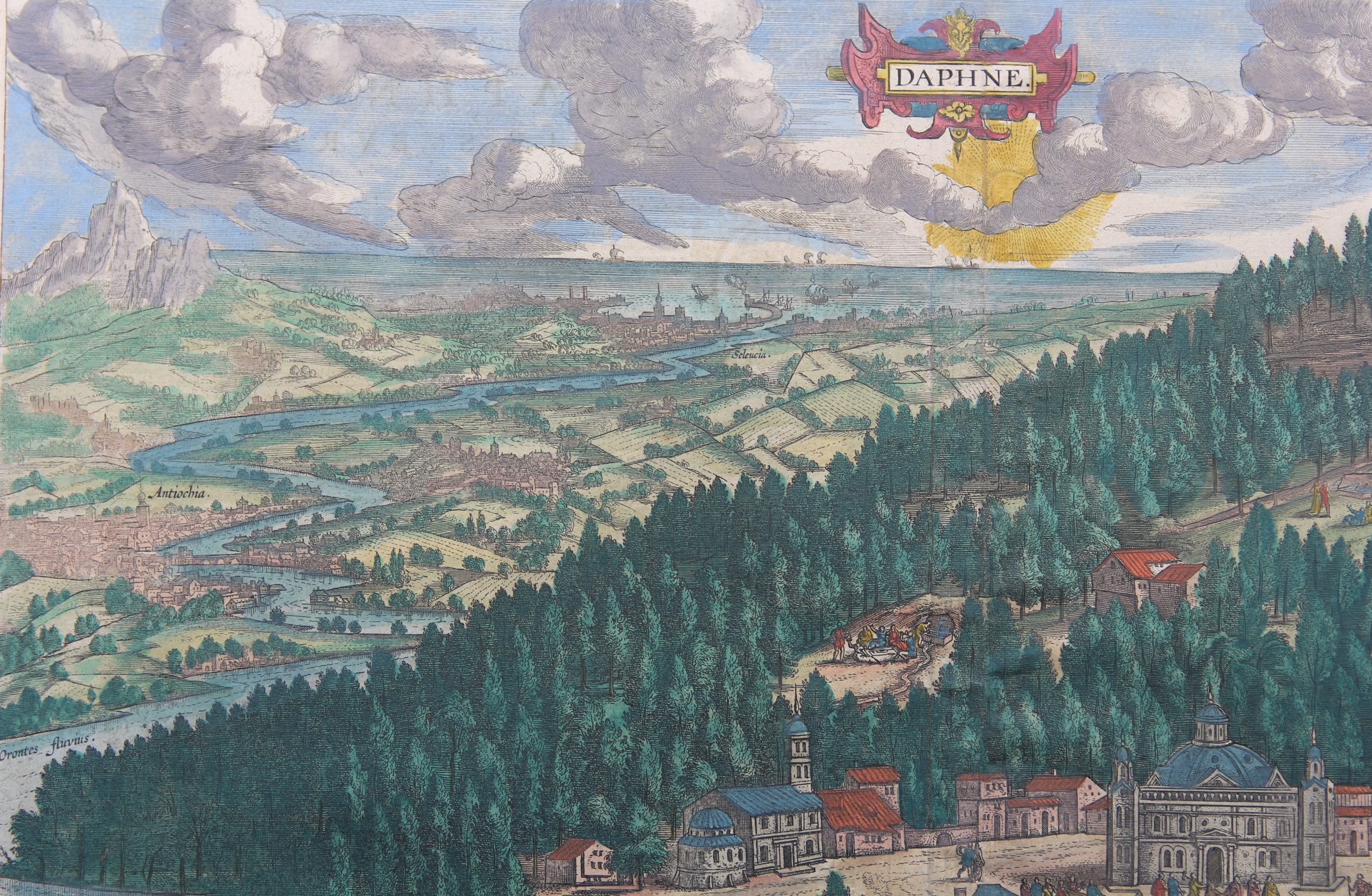
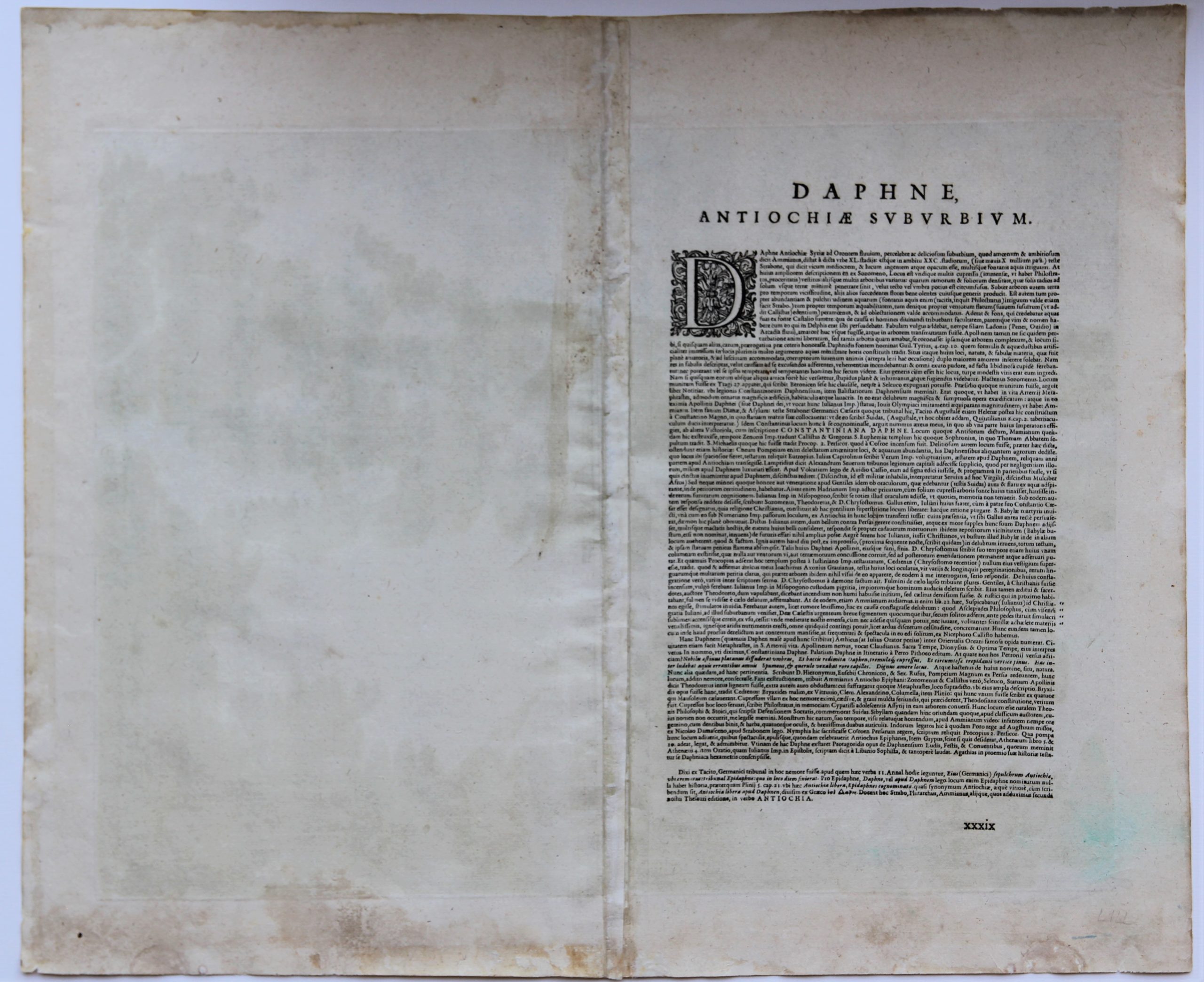
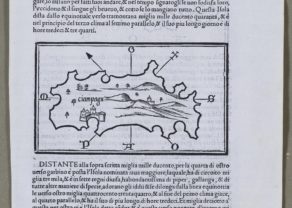
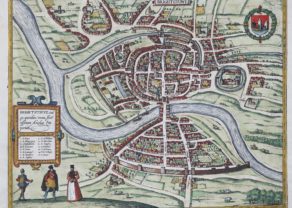
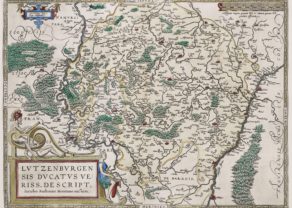
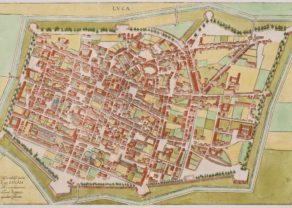
Apollo searching for Daphne
Daphne is situated in current day Syria, close to the Turkish border. One notices in the distance the ancient towns of (at the coast) and Antioch (today known as Antakya), both situated on the banks of the River Orontes (now River Asi, rising near Bekaa in Lebanon). Seleucus I Nicator (ca. 358 v.Chr.-281 v. Chr., one of Alexander the Great’s generals and also one of his successors; he established the dynasty of the Seleucids) wished to attract more Greek citizens in this area and founded both places as well as Daphne. Antioch would also play a pivotal role in the emergence of both Hellenistic Judaism and early Christianity.
The paradise of Daphne is dedicated to the God Apollo. Amidst a park of woods and waters the temple of Apollo dominates the scene. The mythical love story of the two youngsters inspired the construction of this cultural and idyllic center. One notices the “typical” anachronistic renaissance architecture. Ortelius published this view in 1595. In 1601 minor details such as the clouds an the central temple were engraved again. This view dates 1609. Ortelius justified the incorporation of the views of Tempe and Daphne because he found many references to them in the classical authors. He drew upon ancient sources, including Ammianus, Strabo, Zozomenus and Philostratus.
The allegory of Daphne and Apollo symbolizes the (cliché) struggle between chastity and lust. In art both are usually depicted with Apollo chasing Daphne.